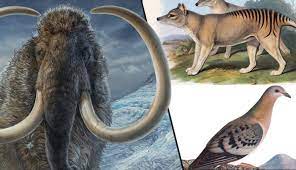In a world facing an unprecedented rate of species extinction, the urgency to witness and appreciate the beauty of our planet’s diverse wildlife has never been more pressing.
As habitats disappear and ecosystems face threats from human activities, many iconic and majestic animals are on the brink of extinction. With increasing environmental challenges, the urgency to appreciate and protect our planet’s biodiversity has never been more critical. Numerous species teeter on the brink of extinction, their survival hanging by the thinnest of threads.
Click here to watch a video: https://www.youtube.com/watch?v=7k8CcAU2Lt0
If you’re a wildlife enthusiast or simply someone who values the beauty of our natural world, here’s a list of animals you should consider seeing before they vanish forever.

Amur Leopard
Location: Russia and China
The Amur Leopard, a magnificent big cat with its striking spotted coat, is one of the rarest feline species on Earth. With an estimated 100 individuals remaining, a visit to their native habitats in Russia and China might offer a glimpse into the elusive world of this critically endangered species.
Where to see them: Audubon Zoo, Beardsley Zoo, Denver Zoo, El Paso Zoo, Fort Wayne Children’s Zoo, Jacksonville Zoo, Lincoln Park Zoo, Minnesota Zoo, Oregon Zoo, Philadelphia Zoo, Pittsburgh Zoo, Rolling Hills Zoo[1], San Diego Zoo, Sedgwick County Zoo, St. Louis Zoo
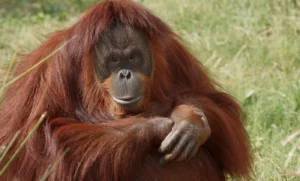
Sumatran Orangutan
Location: Sumatra, Indonesia
The enchanting Sumatran Orangutan, with its expressive eyes and distinctive reddish fur, is critically endangered due to habitat loss and illegal hunting.
Witnessing these intelligent primates swinging through the lush forests of Sumatra could be
a poignant reminder of the fragility of their existence.
Where to see them: Atlanta Zoo, Audubon Zoo, Birmingham Zoo, Cincinnati Zoo, Denver Zoo, Fort Wayne Children’s Zoo, Miami Zoo, Rolling Hills Zoo, National Zoo, Oregon Zoo, Philadelphia Zoo, Sacramento Zoo, St. Louis Zoo, Oklahoma City Zoo
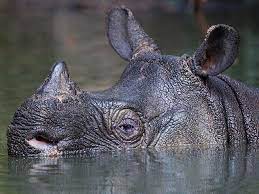
Javan Rhino
Location: Indonesia and Vietnam
The Javan Rhino, one of the rarest large mammals, faces imminent extinction. With only a handful left in
the wild, a journey to their native habitats in Indonesia and Vietnam could be the last chance
to witness the grace and resilience of this ancient species.

Vaquita
Location: Gulf of California
The Vaquita, the world’s smallest and most endangered marine mammal, is on the verge of disappearing forever. A trip to the Gulf of California might provide a unique opportunity to see these elusive porpoises in their natural habitat, emphasizing the need for urgent conservation efforts.

Giant Panda
Location: China
While the Giant Panda has made significant strides in conservation, seeing these iconic black-and-white bears in the bamboo forests of China remains a must. Appreciating the efforts to protect this symbol of conservation highlights the positive impact of global initiatives on endangered species.
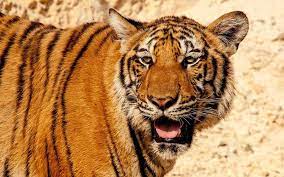
South China Tiger
Status: Possibly extinct in the wild
The elusive South China Tiger, possibly extinct in the wild, once roamed the forests of China.
While sightings in their natural habitat are nearly impossible, supporting conservation efforts and
visiting reputable reserves can contribute to the preservation of this critically endangered subspecies.
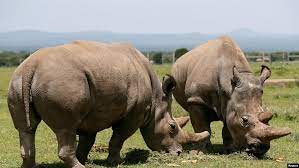
Northern White Rhinoceros
Status: Functionally extinct in the wild
With only two females remaining, the Northern White Rhinoceros is functionally extinct in the wild.
Though seeing them in their native habitat is no longer possible, supporting conservation sanctuaries and understanding their plight is crucial for the future of rhino conservation.
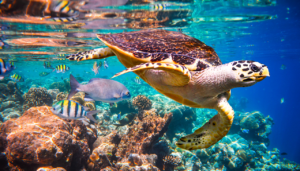
Hawksbill Sea Turtle
Global distribution
Hawksbill Sea Turtles, known for their beautiful shell patterns, face threats from habitat loss and poaching. Snorkeling or diving in regions where these turtles are still frequent can offer a chance to witness their majestic presence and reinforce the importance of protecting marine ecosystems.

Yangtze Giant Softshell Turtle
Location: China and Vietnam
The Yangtze Giant Softshell Turtle is one of the world’s rarest turtles, with only a few individuals left. Exploring the waters of the Yangtze River in China and Vietnam may provide a glimpse of this ancient species, emphasizing the urgency of safeguarding freshwater habitats.

Red Pandas
Endangered
Red Pandas typically grow to be slightly larger than a typical house cat. They have reddish-brown fur and big, bushy tails that usually measure 18 inches long, which they use as blankets in cold weather. Like Giant Pandas, these pandas enjoy the mountainous forests and sleep most of the day. They feed on bamboo, fruits, acorns, and even eggs.
Where to see them: Many zoos including Birmingham Zoo, Blank Park Zoo, Bronx Zoo, Central Park Zoo, Cincinnati Zoo, Detroit Zoo, Elmwood Park Zoo, Fort Wayne Children’s Zoo, Franklin Park Zoo, Sacramento Zoo, Oklahoma City Zoo
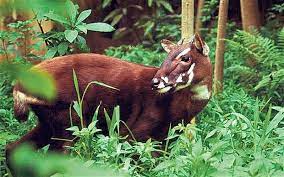
Saola
Location: Vietnam and Laos
Often referred to as the Asian unicorn, the Saola is a mysterious and critically endangered species.
Journeying through the forests of Vietnam and Laos could offer a rare opportunity to witness this elusive creature and support conservation initiatives aimed at preserving its unique existence.
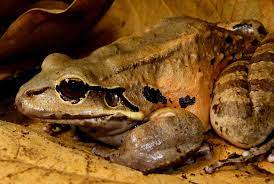
Mountain Chicken Frog (aka Mountain Ditch Frog or Giant Ditch Frog)
Critically Endangered
The Mountain Chicken Frog is one of the largest frogs in the world, growing up to eight inches long and weighing around two pounds. The name, mountain chicken, came from the taste of its meat. Its natural habitat is in Montserrat and Dominica. The population of the Mountain Chicken Frog has decreased 80% in the past ten years mainly due to habitat loss.
Where to see them: Akron Zoological Park, Detroit Zoo, Omaha’s Henry Doorly Zoo, St. Louis Z
The plight of these endangered animals serves as a sobering reminder of our collective responsibility,
to protect and preserve the incredible biodiversity of our planet.
By supporting conservation efforts and engaging in responsible ecotourism practices,
we can ensure that future generations have the opportunity to marvel at these magnificent creatures
in their natural habitats.
Let us cherish and protect these animals before they vanish forever.
The urgency to witness these incredible animals in their natural habitats is underscored
by the looming threat of extinction.
By promoting responsible ecotourism, supporting conservation organizations, and raising awareness,
we can contribute to the ongoing efforts to ensure the survival of these species for generations to come.
Let our collective appreciation become a catalyst for positive change in the realm of wildlife conservation.
Read More: https://placesandlifestyle.com/travel-themed-craft-ideas/

